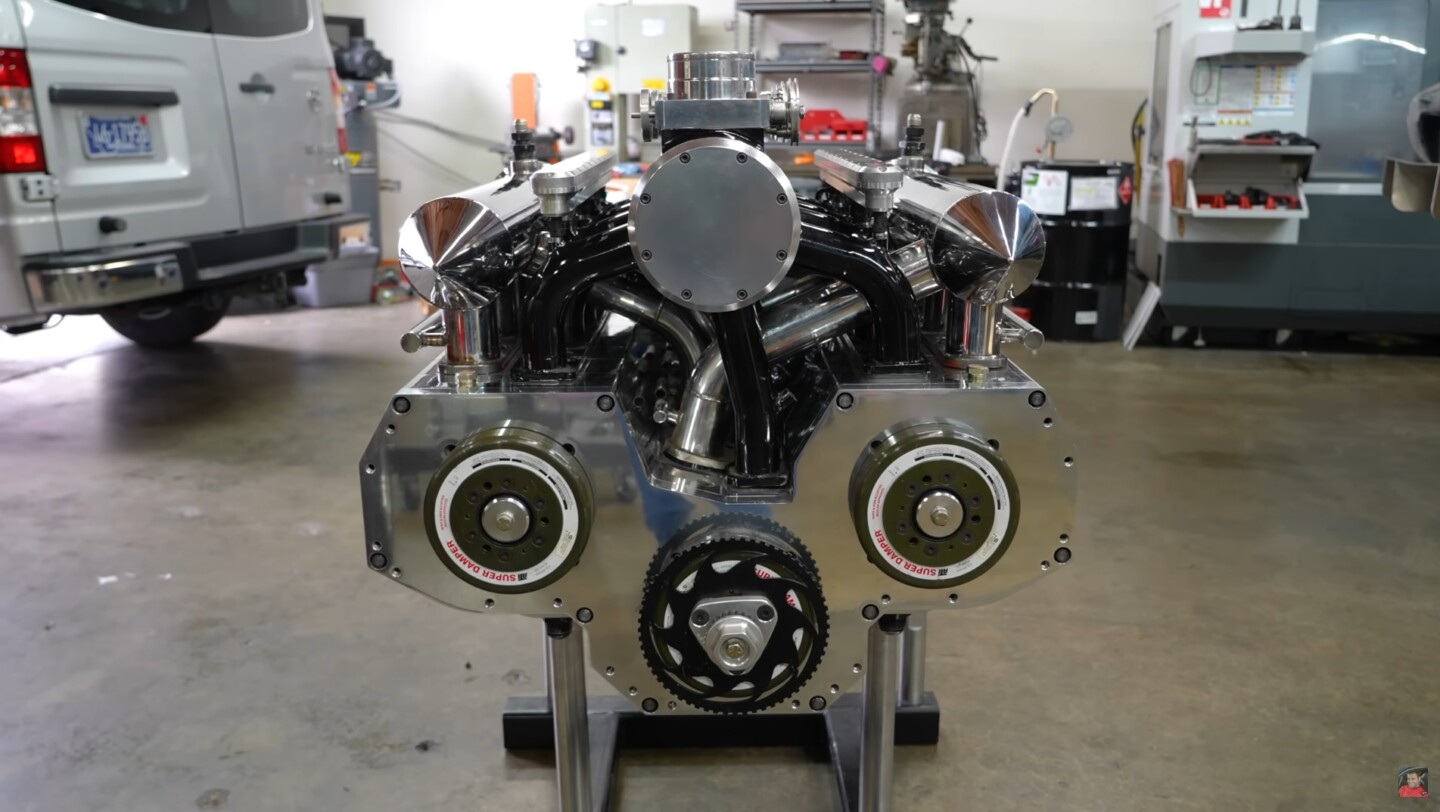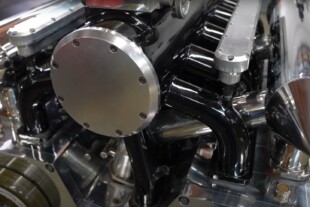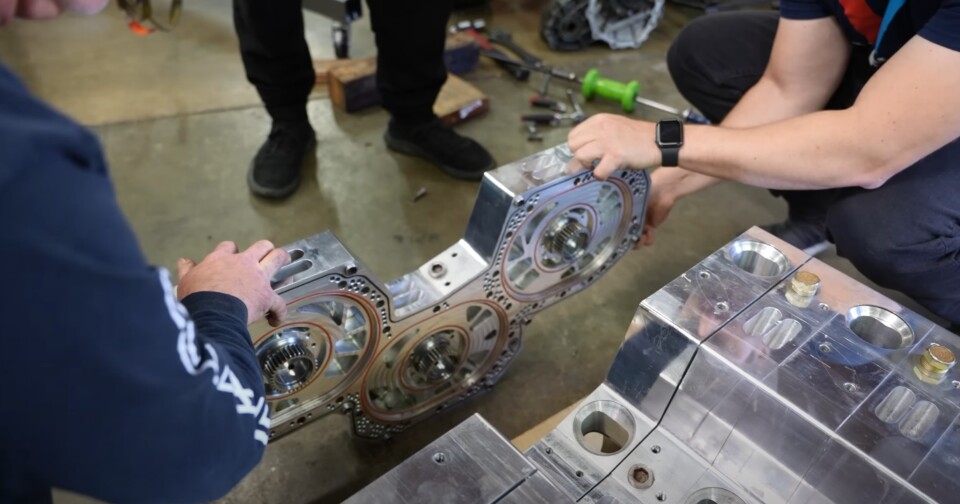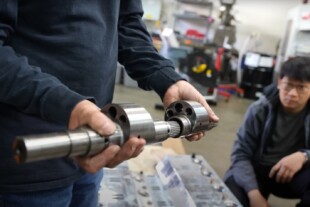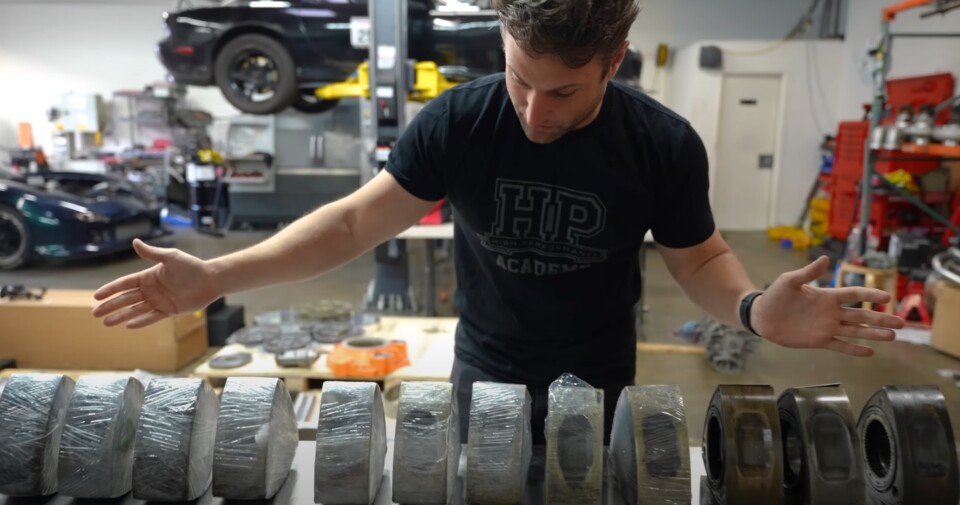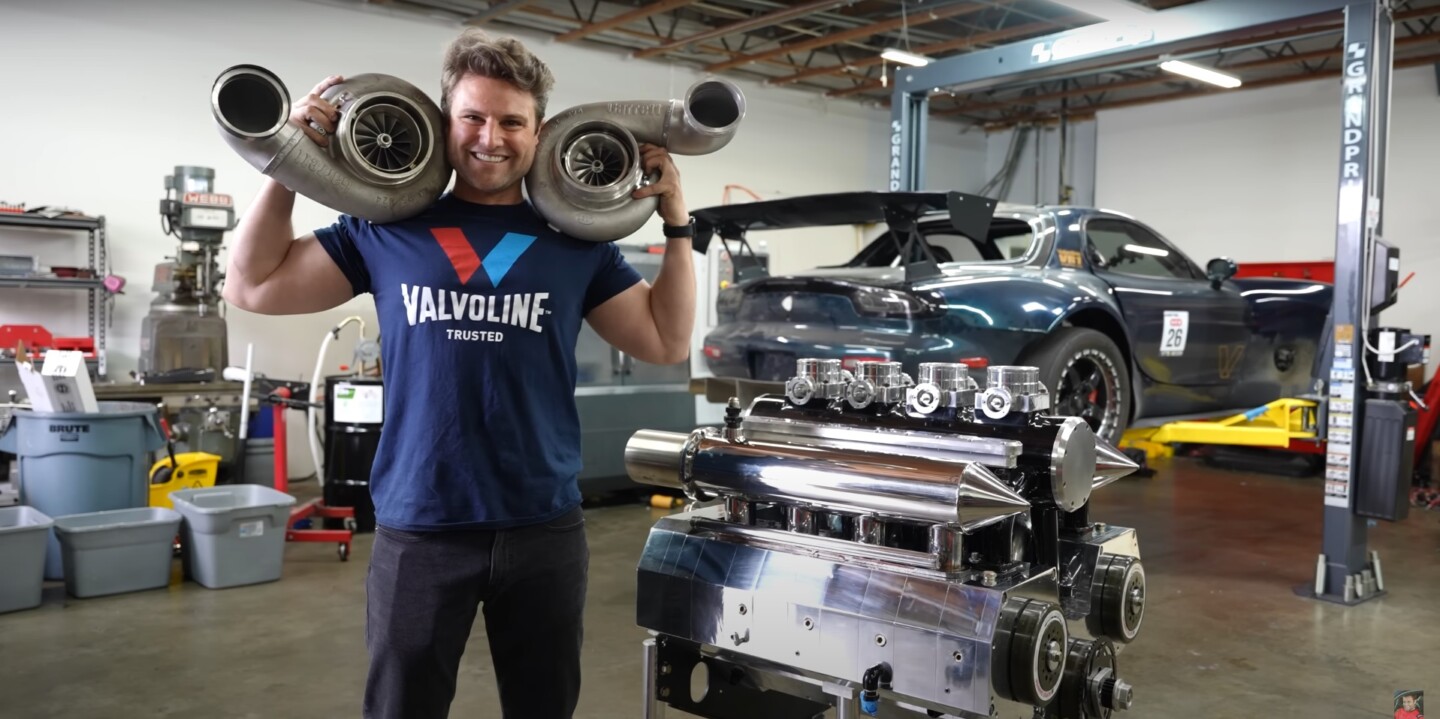Just when you thought the Wankel rotary engine couldn’t get any wilder, wackier, or more wonderful, along comes a guy who finds a way to slap a few additional rotors into the camshaft-free motor.
Maybe it’s the unique capabilities (and limitations) of the engine itself that forces the hands and minds of the world’s most creative engineers to tinker with this piston-free alternative option. Perhaps it’s the challenge of taking something that was never intended to be scaled up in size, and doing it anyways, just to see if it will work or not. Or could it be Mazda’s laggardly development of a new rotary motor that has left us fiending for a modern fix to the issues found within the defunct RX-8?
Whatever the cause, many have long felt the need to upgrade the traditional rotary design into something far greater. This leads us to today’s topic of utter overindulgence: A 12-rotor engine with a bonkers boating backstory, and cojones the size of golden kiwis.
You Gotta Wait to Rotate
So while the iconic 13B Mazda motor remains widely revered as the last great marvel of modern rotary engineering, its inherent failures are equally well renowned. While some presume that the rotary engine’s flaws are just part of its DNA, others argue that it’s the well-documented blunders made within the aftermarket community that has caused the Wankel rotary to get such a bad rap. Either way, people tend to gloss over all of the rotary engine success stories in favor of the horrific ones, because… well… drama sells.
But that’s another diatribe for another time. For today we are discussing something that if proved theoretically sound, and completely safe to push to its limits, could go down in history as the greatest rotary engine in history. An engine with very little relation to the traditional Mazda rotary motors many of us have come to know, but still brimming with all of the benefits of the Wankel’s rotational design.
For veteran Youtuber Rob Dahm, this has been a moment he has been waiting on for a very long time. The rotary engine enthusiast, shop owner, and YouTube star has long documented his automotive exploits, may they be successful, short-lived, or simply subjective.
But for a multitude of reasons, the guy has never managed to surpass the quad-rotor threshold. So when Dahm was contacted by a guy claiming that he could “loan” the enthusiastic petrolhead a one-off engine rocking twelve rotors, you had better believe that things escalated rather quickly.
A Rotary Demigod by Design
Once he got past the fact that this 15.7-liter beast truly is one massive engine, Dahm noticed that the engine used a much smaller rotor housing configuration than the online pictures implied. According to the man primarily responsible for designing and building this badass bruiser, Tyson Garvin, a super slim housing was utilized purely for clearance purposes. Garvin explains that a smaller footprint than the OE triple-rotor housing Mazda originally manufactured was mandatory due to the engine’s unique shape and size.
Oh, but I’m getting ahead of myself. I guess it would be safe to presume that some of you are unfamiliar with this DIY project which we’ve covered previously. So let’s get you up to speed real quick via a bit of backstory.
According to Garvin, this whole project started back in 2010, when his affinity for racing speedboats resulted in a search for fresh powerplant options. For decades, the boats he raced had been powered by heavily modified big-block Chevy engines. But with one failure after another plaguing the boating enthusiast, Tyson Garvin found himself being forced to think outside of the big-block box.
Photo Credit: Rob Dahm/YouTube
What he settled on was probably the furthest thing from straightforward. With the help of a few boating brainiac buddies, Garvin settled on the rotary engine as his chariot horse of choice. An engine that could create a total of 5,000 horsepower, if pushed and tuned properly, but with a lower powerband range that could run smoothly and super cool for hours on end in the open water.
This resulted in the machining of a 960 cubic-inch, Y-shaped, 15.7-liter triple-quad rotor engine that was honed almost entirely out of aluminum, and almost infinitely scalable in size and performance output. Weighing in at around 830 lbs., with a length of 76cm (29.9 inches), a width of 80cm (31.5 inches), and a height of 61cm (24 inches), Garvin’s creation had the footprint (and bolt mount patterns) of a big block Chevy but came stuffed with a dozen rotors inside.
Most people thought it was just a mock-up piece, but it is a running engine. — Tyson Garvin
It may have taken damn near four years or so to finish, but Garvin and his boys managed to tackle all of the design work and machining of the engine. While almost everything on the build is one-off in nature, the rotors themselves remain the only major portion of the engine that comes straight out of a Mazda 13B 2-rotor unit.
What Garvin and his team ended up with was a motor with three rows of evenly distributed quad-rotor engineering, all stuffed inside a Y configuration. By utilizing 7075 aluminum as the material of choice for much of the engine, Garvin was able to build a body that could be taken apart in vertically cut “slices.” Stronger and harder than other forms of aluminum, this alloy provided the added perk of being able to be polished to a more brilliant shine. Hence the motor “blinging it” in the reflection department.
From a structural standpoint, every section of the engine’s aluminum, Y-shaped housing is identical to the next. So you can scale the powerplant up or down in size as needed, thus making 6, 9, 12, 15, or more rotor configurations possible. Hell, you can even opt for a stubby little 3-rotor if you need to save space, it’s really your call.
There are also a ton of machined ports inside this package, all intended to allow ample flow for the dry sump oiling system. Furthermore, additional pockets within the water jacket were made to allow liquid to reach all of the cooling ports on the bottom end via the use of twin induction channels and a straight-through design from one end to the other.
And while the designing, parts sourcing, engineering, and testing associated with this motor took years to orchestrate, somehow Garvin was able to make it happen. Outside of a minor machining mishap, Garvin says that he wouldn’t change a thing on the motor, and we couldn’t agree more. Seriously, just look at it. The entirety of this one-off 12-rotor Y-engine is virtually flawless from a manufacturing perspective!
Deconstructing a Deity
For those of you who are wondering, yes, this engine does run. And yes, it has been dyno tested. In fact, the first dyno session was conducted when a carburetor was still affixed to the engine, which you can watch here. Apparently, there wasn’t an ECU at the time that could safely and adequately control 24 injectors and all of the coils that came along with them. So Garvin utilized a duo of Jaguar V12 computers for the ignition side, which resulted in around 800 foot-pounds of torque being produced at 2,000 rpm in naturally aspirated form.
Furthermore, 497 horsepower was produced at just 3,200 rpm, with the sweet spot between 8,500 and 9,000 rpm resulting in nearly triple those figures. But, while Garvin played it safe and shut down the dyno prior to pushing the engine to its maximum potential, he says that full-throttle would result in 14,000 rpm pulls.

Tyson Garvin tweaked a bank of rotors so that they would spin backward, thus negating NVH concerns, and allowing the engine to remain symmetrical in both shape and size. Photo Credit: Rob Dahm/YouTube
Back on the physical side of things, all three cranks attach to custom-built gears to control timing, with a smaller center gear receiving a pressurized oiling unit to keep its higher-speed bearings properly lubricated at all times. Speaking of lubrication, apparently, some of the internal oiling ports had to be machined so precisely, that they required hairline fractions to clear other port holes.
With three banks now housing four rotors a piece, and the top two banks connected to the lower bank via gears in the rear and an integrated output shaft, counter-rotation against the central bank could allow the exhaust side of the engine to align properly. Garvin is quick to admit that he despised the look of a lopsided engine, and so the symmetry of the entire project had to be on point.
The engine is 480 cubic inches when firing each rotor once, as calculated for a rotary. It is 960 cubic inches when calculated like a big-block with two crank revolutions, and 1,440 cubic inches if you fire each face of the rotor. — Tyson Garvin
Adding even more madness to the mayhem is the fact that zero counterweights are used within the motor. Instead, the engine relies upon each rotor bank’s position to offset the other. This is achieved in part by a gearset that sports an idler to make sure that rotation follows the same direction as the main shaft. The only trick here is that you have to fire two banks simultaneously to offset/balance the opposite end. Which as Rob Dahm so eloquently explains, is like turning a four-rotor design into a flat-plane crank configuration.
Photo Credit: Rob Dahm/YouTube
Internally, splined e-shafts with 32 splines per unit mean that they can be clocked any way you wish, with internal oiling providing additional pressure to lock the bearings into place once they have been applied around the circumference of each shaft. Tyson further over-engineered this monstrosity of a rotary motor by giving each e-shaft the ability to be fully disassembled and reconfigured to further adjust engine timing as needed.
As for temp concerns, Tyson says it’s wild how cool this motor runs. Oiling, on the other hand, requires a monolithic, five-scavenge-stage unit, equipped with an oil filter that surely has its own ZIP code, and a splined drive on the backside for a mechanical fuel pump. And yes, custom silicone seals with a ton of specialized silicone glue had to be used to sandwich the whole thing together.
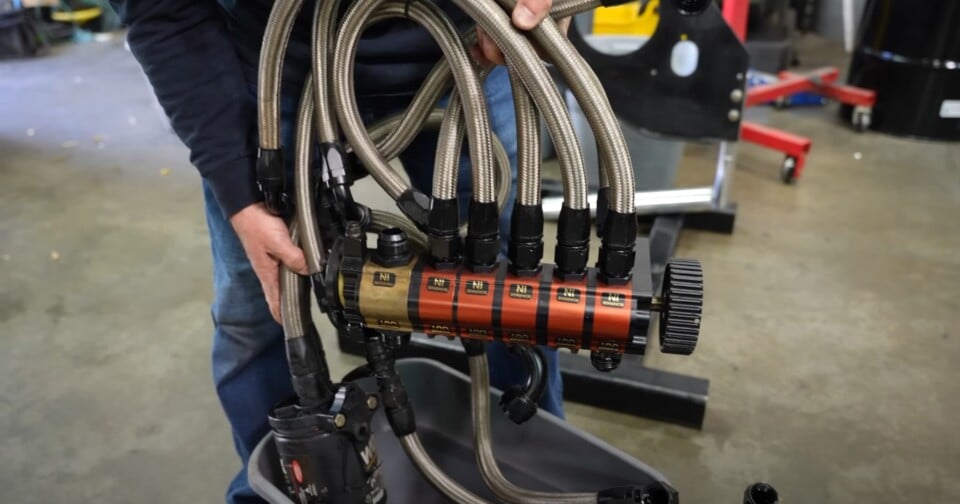
Both the oiling and fueling side of this 12-rotor motor are quite impressive. Oiling is handled with the help of a five-scavenge-stage external pump that sports a splined drive on the backside for affixing the mechanical fuel pump, which in turn feeds an armada of Injector Dynamics ID2200 units. Photo Credit: Rob Dahm/YouTube
The Shape of Rotary Things to Come
Ultimately, Garvin designed this engine with boating being its core chore, and we’re not just talking about speed boat racing either. May it be weekend cruises on 1,400 horsepower with 87-octane, or doubling the output on race day to 2,400 horsepower thanks to a pair of turbochargers, this motor was bred to be reconfigured.
There was even talk at one point of turning the boost up to 25 pounds and throwing some race juice inside to see if 3,600 horsepower was achievable. If proven to work safely and reliably, the engine could then be augmented to receive 50 pounds of boost, resulting in over 5,000 horsepower!
So yes, this is truly a Frankenstein build in its purest form. Take a quick scroll through the build updates on the 12-rotor engine’s Facebook page and you will plenty of backing evidence to prove this point. This leads us back to why Tyson Garvin has so graciously “gifted” this magnificent motor to Rob Dahm.
Both men are quite curious to see what this motor has to offer when reconfigured and pushed to its maximum potential. So with infinite firing orders for each rotor bank allowing equally infinite tuning and powerband opportunities, and Dahm always looking for a fun new rotary project, we plan on keeping a close eye on Dahm’s YouTube uploads in the upcoming months.
May it be sequential, in tandem, or any combo in between, it’s time to say farewell to fixed timing! According to Garvin, all that this powerplant needs now are some fresh tip seals, some rotor clearance measurement work, and a bit of fine-tuning for it to be ready for firing once again. Now as to what chassis Dahm plans on shoehorning this demigod of a motor into, that remains just as much of a mystery as the final power figures this 12-rotor motor will produce.



